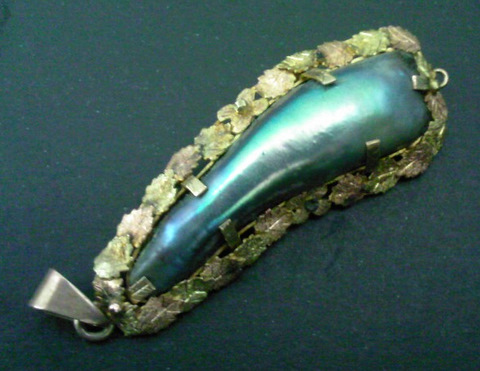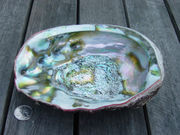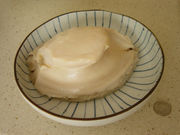|
Natural AbaloneNatural Abalone Pearl is one of the most lovely shells in the world and also has tasty meat.
Rare Abalone Pearl - Haliotis sp. The New Zealand Blackfoot-Abalone Abalone is a univalve (one shell) mollusk. There are eight varieties found in various areas around the Pacific Rim. The blackfoot abalone, so called because of the dark black color of its foot, can grow up to 18cm in length and 13 cm wide.
While it is often found close to the surface it may grow to depths of 30 meters, where seaweed grows in larger amounts helping to nurture its colorful mother-of-pearl. The undulating grain in the shell is the result of seasonal fluctuations in the Abalone's diet. The dark organic material of the conchiolin layers is laid down during the winter months and the nacre, made up of aragonite and calcite crystals, is laid down in the warmer summer months. In the mid-14th century, when the Maoris first arrived in today's New Zealand with their canoes, no mammals lived on the island.
Today it is still served as a sought-after delicacy, and there is increased demand for it in the Far East. Indeed it is the only mollusk which has a commercial usage in its entirety; the shell is used for inlay and buttons, the meat for food, and the guts for fishing bait. Abalone pearls are rare. A large pearl over 15mm, such as the main four that Lou has found, is found in probably only 1 per 900,000 Abalone. Reasons for rarity are that large pearls require approximately eight to ten years to form. Since the animals are fished commercially for meat when they are four or five years old, sufficient time has not passed to allow pearl formation. Furthermore, a specific combination of factors must exist for natural pearl formation, including invasion of a foreign object, correct water temperature, and availability of correct diet. Natural Abalone pearls can vary in shape, colour, and may be solid or hollow. Their shapes can vary from round or ovalish to flat baroques to giant horn shapes.
This horn-shape of a natural abalone pearl is due to the anatomy of the snail. Natural abalone pearls are formed in thick nacreous layers joined together by organic conchiolin a form similar to that of other oriental pearl formation, but with thicker nacreous layers. (Wiki info.)
|














